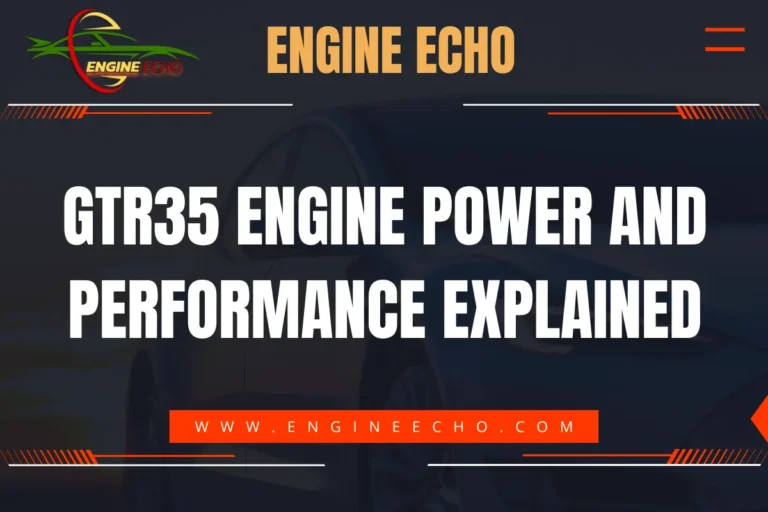VW 1600 Engine: Classic and Reliable

Key Takeaways:
- The VW 1600 engine is celebrated for its durability and long-lasting performance, particularly in the iconic Volkswagen Beetle and Karmann Ghia.
- Its air-cooled, 4-cylinder design ensures simple maintenance and easy repairs, making it a favorite for DIY enthusiasts.
- This engine strikes a balance between fuel efficiency and power, delivering adequate performance for daily driving.
- Upgrades and modifications can improve the engine’s reliability and performance, allowing it to keep pace with modern standards.
- The VW 1600 remains a symbol of classic car culture, maintaining a strong presence among vintage car collectors and enthusiasts.
Introduction
The VW 1600 engine is hands down one of the most iconic powerplants Volkswagen ever created. I’ve always been a fan of how simple yet effective it is. There’s just something incredibly satisfying about an engine that works hard without all the complexity of modern designs. Whether you’re restoring a classic Beetle or just keeping it alive for weekend cruises, the VW 1600 is a joy to work with. I’m writing this because I believe this engine deserves its spot in the spotlight—it’s not just a piece of history; it’s a piece of engineering that’s still relevant today.
1. History of the VW 1600 Engine
Origins and Development
Back in the 1960s, when the VW 1600 engine first came out, it really changed the game for Volkswagen. It was designed as an upgrade to the smaller 1200 and 1300 engines, bringing more power without adding unnecessary complexity. The engine powered iconic models like the Beetle, Karmann Ghia, and the VW Type 3. I love how Volkswagen stuck to their philosophy of “simple is better” with this engine—it’s something that continues to win people over, even today.
The Impact of the VW 1600 on the Market
This engine didn’t just change the driving experience—it changed Volkswagen’s reputation. The 1600 helped solidify VW’s presence in the U.S. and European markets, where people fell in love with the Beetle and other models powered by this reliable little engine. As someone who grew up surrounded by vintage VWs, I can personally say the VW 1600 engine is one of the main reasons these cars still have such a huge following.
2. Technical Specifications of the VW 1600 Engine
Engine Layout and Design
The VW 1600 is a flat-four engine, meaning it’s got four cylinders all laid out horizontally. With a displacement of 1584 cc and that classic air-cooled design, it’s vintage VW at its best. I’ve always appreciated this layout—it keeps the center of gravity low, which makes the handling better, and let’s not forget, fewer parts to worry about means easier maintenance.
Power Output and Torque
The VW 1600 engine produces between 47 and 60 horsepower, depending on the configuration. Sure, those aren’t high numbers by today’s standards, but for what it was built for—reliable, everyday driving—it delivers. Personally, I’ve always felt it’s the perfect balance between power and practicality, especially when cruising around town or heading out on a leisurely drive.
Fuel System and Carburetion
Most VW 1600 engines came with a single carburetor, but if you were looking for a little more kick, a dual carb setup was available too. I remember switching to dual carbs on my own Beetle, and the difference was noticeable right away—better throttle response and just an all-around more engaging drive.
3. Performance Characteristics of the VW 1600
Acceleration and Top Speed
No, you’re not going to win any races with the VW 1600, but that’s not the point. The engine tops out at around 80 mph, which is more than enough for the kind of driving these cars are known for. What I love is how smooth the acceleration feels—it’s steady and reliable, perfect for cruising and city driving.
Fuel Efficiency
What always surprises me about the VW 1600 is how fuel-efficient it still is, even after all these years. In stock form, you’re looking at 25–30 miles per gallon. It’s pretty impressive for an engine from the 60s, and it really speaks to how well it was designed.
Durability and Longevity
If you take care of it, this engine can easily run for over 100,000 miles. I’ve always said the key to keeping a VW 1600 going is simple, regular maintenance—change the oil, adjust the valves, and keep an eye on things like timing and spark plugs. Mine has never let me down, even after decades of use.
4. Maintenance Requirements
Routine Maintenance Tips
Working on a VW 1600 engine is like therapy for me—except for when a bolt refuses to budge! Jokes aside, it’s one of the easiest engines to maintain. Here are a few tips:
- Oil Changes: Every 3,000 miles or so. I tend to change mine more often if I’ve been driving in tougher conditions.
- Valve Adjustments: If you’ve never done this yourself, it’s worth learning. Adjusting the valves keeps the engine in tune, and trust me, you’ll notice a difference in how it runs.
- Ignition Timing: Keeping the timing spot-on is essential for smooth performance and decent fuel efficiency.
Common Issues and Fixes
Every engine has its quirks, and the VW 1600 is no different. Overheating can be an issue, especially if the cooling fins are clogged, so keeping those clean is a must. Oil leaks are also pretty common, but they’re usually easy to fix with a new gasket or two. I’ve found that as long as you stay on top of maintenance, the 1600 rarely gives you any major problems.
5. Upgrades and Modifications for the VW 1600 Engine
Popular Performance Mods
If you’re looking to get a bit more out of your VW 1600, there are plenty of options. A lot of folks increase the displacement to 1776cc or even 1915cc, and the power boost is pretty noticeable. For me, one of the easiest and most effective mods has been upgrading the carburetors. Switching to a dual carb setup really woke up my engine—more power, better throttle response, and just a more enjoyable driving experience.
Reliability Enhancements
To push your VW 1600 harder while keeping it reliable, I’d recommend adding an oil cooling system or upgrading to electronic ignition. The oil cooler helps prevent overheating on long drives, especially in the summer, and the electronic ignition takes the guesswork out of adjusting points. Trust me, it’s worth the upgrade.
6. VW 1600 Engine in Popular Culture
Iconic Cars Featuring the Engine
The VW 1600 engine will forever be tied to the Beetle—an icon of the 1960s. Growing up, the sound of that flat-four engine was something I always associated with summer road trips. It’s funny how a simple engine can inspire so much love and nostalgia. Whether it’s in a Beetle, a Karmann Ghia, or a Type 3, the VW 1600 has earned its place in automotive history.
Appearances in Movies and Media
You can’t talk about the VW 1600 without mentioning Herbie, the “Love Bug.” Powered by this trusty engine, Herbie became a symbol of fun, reliability, and quirkiness. For many people, that car and its engine are inseparable in popular culture.
7. Comparison with Other Classic Air-Cooled Engines
VW 1200 vs. VW 1600
Compared to the VW 1200, the 1600 offers a lot more power and performance without losing any of that legendary reliability. While the 1200 is a solid engine, the 1600 just feels more capable. Whether you’re on the highway or navigating city streets, the extra power comes in handy.
Porsche’s Air-Cooled Engines
It’s hard not to mention Porsche when talking about air-cooled engines. Sure, Porsche’s engines were built for performance, but I like to think that Volkswagen, with engines like the 1600, laid the groundwork. It’s the same basic philosophy: simple, reliable, and air-cooled.
8. Environmental Impact of the VW 1600 Engine
Emissions and Fuel Consumption
Let’s be real: the VW 1600 isn’t exactly eco-friendly by today’s standards. But for its time, it was relatively efficient. Keeping the engine well-tuned can help with emissions, but if you’re looking for a greener option, electric conversion kits are available. I’ve seen a few done, and while I’m more of a purist, I can appreciate the effort to keep these cars on the road in an environmentally friendly way.
Modern Alternatives and Retrofits
For those who love the look of a classic VW but want a more sustainable engine, electric conversions are becoming more popular. I’ve seen a few conversions in person, and while I personally prefer the original engine, the benefits of going electric are hard to ignore.
9. Case Study: A Restored VW 1600 Beetle
The Restoration Process
Restoring a VW 1600 engine is a labor of love. I’ve gone through it myself, and while it’s a lot of work, the payoff is huge. Finding parts can be tricky, but with the right patience and know-how, you can bring these engines back to life. There’s nothing quite like hearing that flat-four purr again after a full restoration.
Post-Restoration Performance
Once restored, a VW 1600 engine runs as smooth as the day it left the factory. Mine has been through the full process, and I still get a thrill every time I turn the key. It’s reliable, strong, and reminds me why I fell in love with these engines in the first place.
Conclusion
The VW 1600 engine is truly a timeless piece of automotive engineering. Its simplicity, reliability, and old-school charm make it a favorite among vintage car enthusiasts. Whether you’re restoring a classic or just looking for an engine that won’t let you down, the VW 1600 has you covered. It’s one of those engines I’d recommend to anyone who loves working on their own car—it’s a piece of history that still holds up today.
Frequently Asked Questions (FAQs)
How much power does a VW 1600 engine produce?
The VW 1600 engine produces between 47 and 60 horsepower, depending on the configuration.
What are the most common problems with a VW 1600 engine?
Overheating and oil leaks are common issues, but regular maintenance can prevent most major problems.
Can I upgrade the VW 1600 engine for better performance?
Yes, popular upgrades include increasing the displacement and adding dual carburetors.
How often should I service a VW 1600 engine?
Routine maintenance, such as oil changes and valve adjustments, should be done every 3,000 miles.
What are the environmental concerns of driving a VW 1600-powered car today?
The engine is less fuel-efficient and produces more emissions than modern engines, but electric conversion kits are available for those looking to reduce its environmental impact.
Thanks for checking out this article on EngineEcho.com! Hope you found this article: "VW 1600 Engine: Classic and Reliable" helpful! If you liked it and want to dive into more car engine topics, head over to our homepage. There's always something new to discover in the world of engines. Enjoy your reading journey!
Check out our previous article: J Series Engine: Honda's Powerhouse Explained






